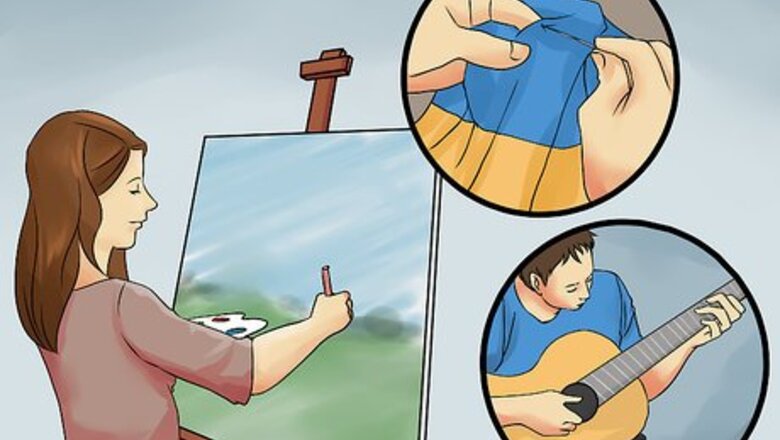
views
Preparing to Learn Magic
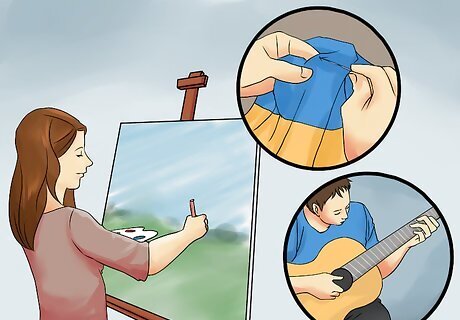
Train your manual dexterity. A major component of much magic, especially slight of hand magic, relies on the dexterity of your hands and distraction of your audience. Some activities you can do to improve your manually dexterity and make sleight of hand magic tricks easier on yourself are: Sewing and needlepoint Learning and playing an instrument Painting Model making
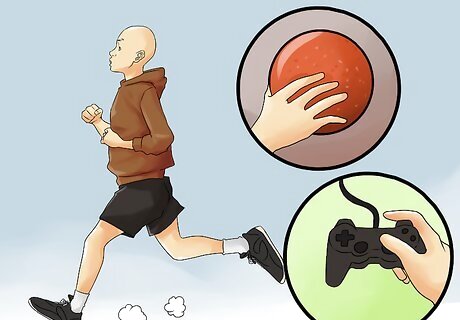
Improve your strength and reflexes. You will likely have to practice a trick many times before you master it and can perform it in front of others. Strength will help you persevere, even when your muscles grow tired, and reflex will help you correct errors while practicing and performing. So ways you can train strength and reflex are: Cross country running Dodgeball Video games (reaction/precision based games, especially) Racquetball
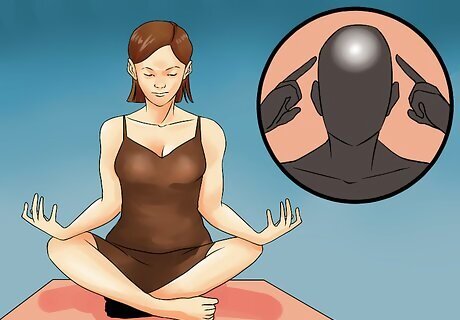
Refine your focus and concentration. Your mental strength emulates your physical body in that it can be strengthened through training. When you're onstage, you don't want your focus or concentration to slip, resulting in a botched trick. You may want to: Meditate Regularly exercise Practice memorization Use concentration exercises
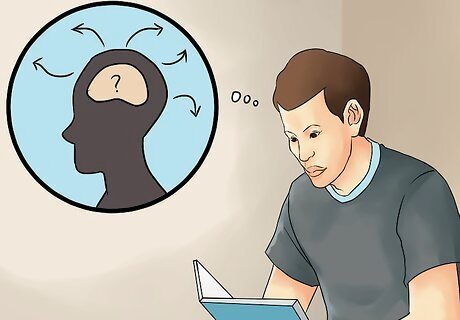
Gain insight into psychology. In addition to physically mastering your magic trick, understanding a little psychology can help you to have the greatest success when performing. Your tricks will be more effective if you understand the psychology behind group dynamics, perception, and illusions.
Studying Magic Tricks
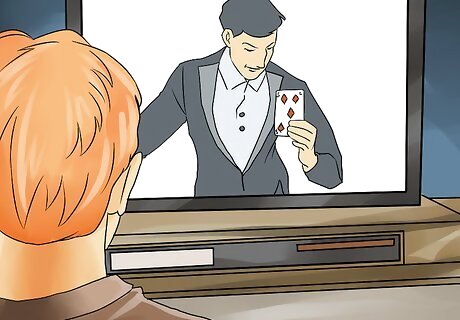
Locate your study materials. This might be a book, video, or website that gives you insights to the mechanics behind the magic. You can locate the magic section of your local public library in section 793.8 (Dewey Decimal system) or section GV 1541-1561 (Library of Congress system). Most bookstores stock magic books in the hobbies or games section.
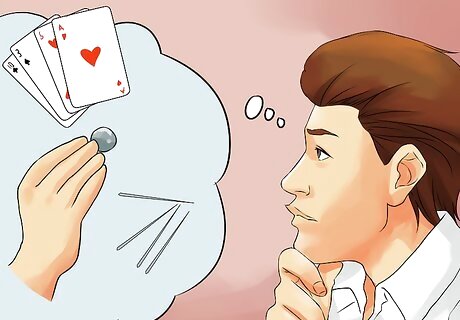
Choose a trick that strikes your interest. You can browse the contents of your study material until you find a trick that captivates and intrigues you. This interest will motivate you through the drills and practice you will need to do before mastering the trick. It may help if you start with a trick that uses common items, otherwise you may need to invest in the components for a more complicated trick. Some common items used in basic magic tricks include: playing cards, coins, and toothpicks.
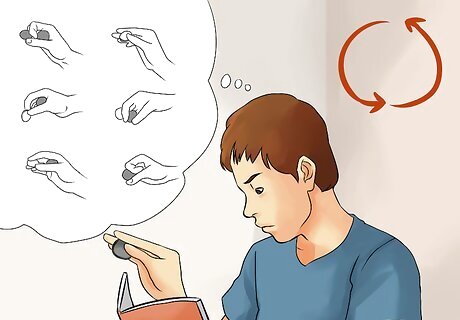
Heed the instructions carefully. Using the objects instructed (also called props), you should try to follow the instructions as closely as possible while practicing any supplied lines or wording (called patter). Repeat the instructions until you have memorized the movements and patter. Even if you don't like the patter provided, speaking while committing the actions of your magic trick will prepare you for interacting with your audience after you have mastered the trick.
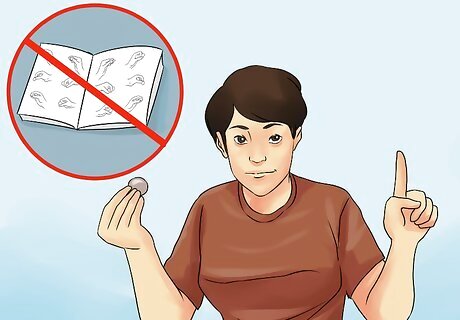
Practice your trick blind. Remove your instructions from view, and pretend there is an audience in front of you. Continue practicing your trick in this fashion until you can do it smoothly and seamlessly. Try your trick from a variety of positions, like while standing or sitting. Practice in front of a mirror and watch your expressions. Do you seem natural? Can you see any areas where you can tighten up your execution?
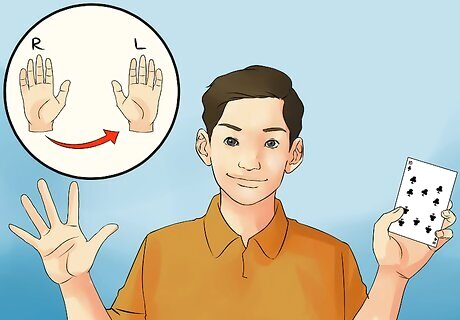
Make adjustments to suit your execution. You may be left-handed and your trick might call for a right-handed pass. Don't be afraid to change up the handedness if it helps you do the trick more easily. You should also consider changing the patter to suit your personality and delivery. Experiment with wording that's conversational, formal, humorous, or you could eliminate patter altogether and perform in silence or to a musical selection.
Learning to Levitate a Card
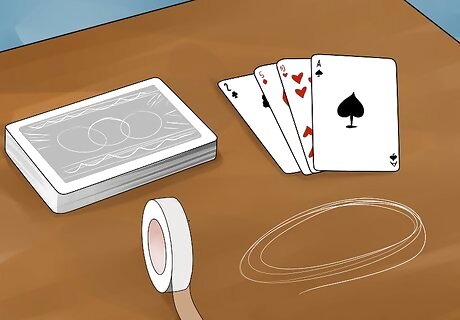
Gather your materials. To perform this simple trick, you will need a few props to give the illusion that you are levitating a spinning card. This will trick will require: A playing card Clear tape Clear elastic/fishing line (a few feet in length)
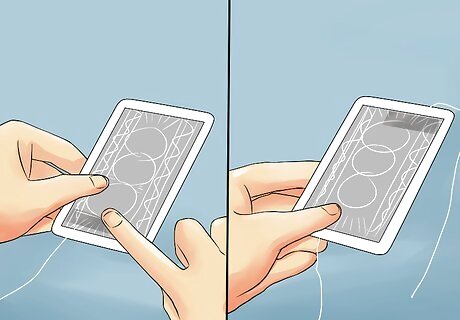
Construct your illusion. You will need to attach the line to the back of your playing card with your clear tape for this illusion. For it to work best, try to make it so that the line threads up and away from the center of the back of your card.
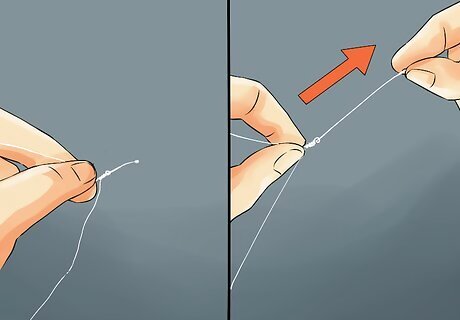
Loop the fishing line. For you to be able to execute this trick quickly and without raising suspicions, you should make a loop, or a simple adjustable knot, at the loose end of the line. This can be slipped over a button on your shirt, attached to your belt buckle, or attached somewhere else on your body, like up your sleeve. Take time to work out the best length for this trick. You will need enough line so that you can launch the card from your hand, leaving it hanging beneath and spinning.
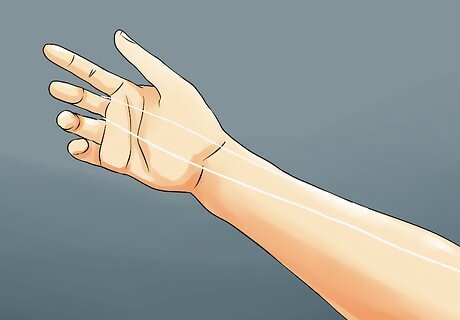
Find your optimal line route. Depending on your hand, there might be a better way of hiding your fishing line from view, but you may want to try running the line through your pointer and middle finger, along the back of your hand parallel to the crease between your thumb and pointer finger, and then to your shirt button or belt.
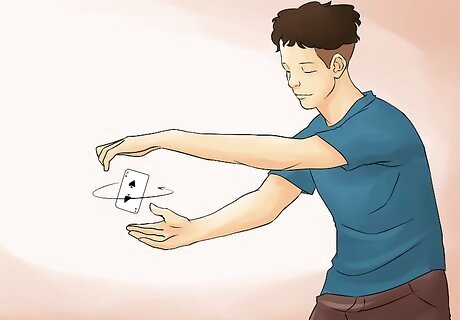
Practice levitating your card. Taking care to make sure you don't get tangled in your invisible line, shuffle a deck of cards until you are ready to make your card float. Then, raising your hand with your fingers splayed, catch your invisible thread between your pointer and middle fingers. Hold your deck of cards loosely as you do this, and as you raise your hand, the card will be raised, as though it is floating, on your invisible thread. Alternately, you can shuffle until you are ready, take your trick card in hand, and launch it in a gesture similar to that of throwing a Frisbee. This will cause your card to spin rapidly and hang in the air. Try not to use excessive force! If your card moves too much, your audience might realize the pivot point from which it is hanging.
Executing and Perfecting Your Tricks
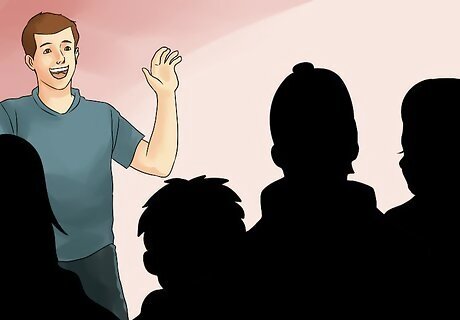
Perform with a test audience. If possible, you should try to do your trick it for a stranger or a casual acquaintance, as these people will be more impartial. Whatever the reaction, by gauging your audience, you can better know how to improve your performance.
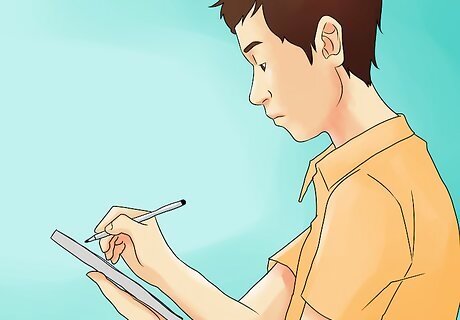
Take notes after your performance. It's easy to forget details, especially after the rush of a performance. Keep a small diary or notebook backstage and jot down the reactions to your performance once you're finished. You should also note any personal critique. Areas where you stumbled should be smoothed with more practice, awkward pauses or other difficulties can be improved by refining or thinking up patter.

Review, revamp, and retest. Make changes according to your notes and rehearse your trick until you are comfortable again. Now you're ready to try your trick in front of another test subject, or maybe even a small test audience.
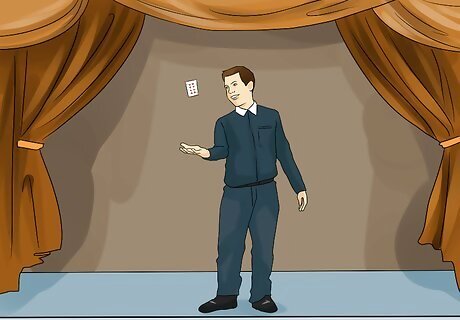
Return to the stage. The atmosphere will always be slightly different when you're on the spot doing your magic. You'll have prepared yourself physically and emotionally for your test audience, but now you need to return to your stage, even if it's only a classroom or the break-room of your office.


















Comments
0 comment